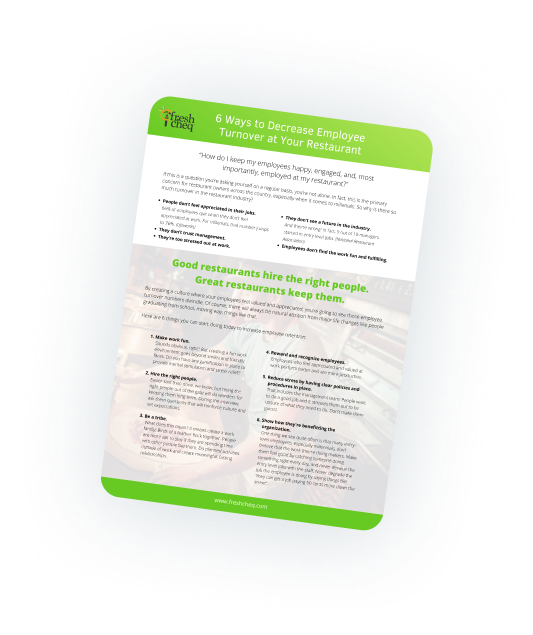There is so much that goes into restaurant management and kitchen operations, probably too many to count. For that reason, this blog post isn’t intended to be the “be all end all” for operations.
However, this will outline six things that you're going to want to keep in mind in order to make sure that you're running an efficient operation and serving healthy food to your guests.
Here are the top six:
1. Food Safety
Things like taking your food temperatures, food labeling, getting your cooling logs done – on time. Yes, you can get them done after the lunch shift by pencil whipping all of the numbers. But what does that really help? Sure, you’ll cover your butt for the health inspector if they come in, but you’re not actually ensuring that the food is safe to eat.
2. Appliance Cleaning
It’s more than just basic cleaning maintenance. You should be conducting deep cleaning tasks regularly. These include getting inside of the appliances, moving them away from the wall to clean behind them, and sweeping and mopping underneath them. It’s easy to mop the floors or wipe the counters, but these deep cleaning tasks are often forgotten.
3. Sanitizer Buckets
Every restaurant owner knows what we’re talking about when we say how often sanitizer buckets are needed and how easy it is to forget to switch them out. Make sure they have the right PPM (parts per million) and have a clean towel and mop ready to go.
4. Employee Hygiene
Did you know that one of the most common ways that a food-borne illness is spread within the restaurant industry is improper handling due to employee hygiene? It sounds obvious, but make sure team members are washing their hands after a restroom break before they prepare food. And then you need to make sure your team members are holding each other accountable for things like, if they sneeze or cough, they need to go wash their hands.
5. Do Your Prep Ahead of Time
If you're scrambling to get things prepared during the shift, you're most likely going to be throwing ingredients around which could cross-contaminate your food. When you are having to scramble and do prep for the shift, raw food could come into contact with other food through improper handwashing. It’s an easy way to get people sick, so do the prep you need ahead of time so you're ready to run an efficient shift.
6. Track Your Food Waste
Make sure that at the end of the day, throughout the shift, you're always tracking your food waste as it happens. Don't put it aside and keep it in a bucket to do one recording at the end of the day. Track the food waste throughout the day. Make sure that you're getting rid of that food waste and not forgetting to record it.




